Fran Baker's Blog
October 18, 2012
October 18, 1934 - December 31, 1934
Note: Because of her mother's illness, an illness that ultimately proved fatal, Ruth didn't write in her diary from again until 1935.
Thank you for reading, and please check back at the turn of the year.
Thank you for reading, and please check back at the turn of the year.
Published on October 18, 2012 04:45
October 17, 2012
Wednesday, October 17, 1934
Note: Ruth did not write in her diary today.
 Construction site of the Lillian Wald Playground
Construction site of the Lillian Wald Playground
Lower East Side, New York City
October 17, 1934
Lillian D. Wald (March 10, 1867 – September 1, 1940) was a nurse; social worker; public health official; teacher; author; editor; publisher; activist for peace, women's, children's and civil rights; and the founder of American community nursing. Her unselfish devotion to humanity is recognized around the world and her visionary programs have been widely copied.

 Construction site of the Lillian Wald Playground
Construction site of the Lillian Wald Playground Lower East Side, New York City
October 17, 1934
Lillian D. Wald (March 10, 1867 – September 1, 1940) was a nurse; social worker; public health official; teacher; author; editor; publisher; activist for peace, women's, children's and civil rights; and the founder of American community nursing. Her unselfish devotion to humanity is recognized around the world and her visionary programs have been widely copied.
Published on October 17, 2012 04:45
October 16, 2012
Tuesday, October 16, 1934
Gave talk in English. Mother still sick.
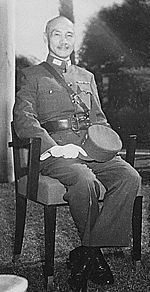 Generalissimo Chiang Kai-shek
Generalissimo Chiang Kai-shek
October 1934
The Long March was a military retreat undertaken by the Red Army of the Communist Party of China, the forerunner of the People's Liberation Army, to evade the pursuit of the Kuomintang (KMT or Chinese Nationalist Party) army. There was not one Long March, but a series of marches, as various Communist armies in the south escaped to the north and west. The most well known is the march from Jiangxi province which began October 16, 1934. The First Front Army of the Chinese Soviet Republic, led by an inexperienced military commission, was on the brink of annihilation by Generalissimo Chiang Kai-shek's troops in their stronghold in Jiangxi province. The Communists, under the eventual command of Mao Zedong and Zhou Enlai, escaped in a circling retreat to the west and north, which reportedly traversed some 12,500 kilometers (8,000 miles) over 370 days. The route passed through some of the most difficult terrain of western China by traveling west, then north, to Shaanxi.

 Generalissimo Chiang Kai-shek
Generalissimo Chiang Kai-shekOctober 1934
The Long March was a military retreat undertaken by the Red Army of the Communist Party of China, the forerunner of the People's Liberation Army, to evade the pursuit of the Kuomintang (KMT or Chinese Nationalist Party) army. There was not one Long March, but a series of marches, as various Communist armies in the south escaped to the north and west. The most well known is the march from Jiangxi province which began October 16, 1934. The First Front Army of the Chinese Soviet Republic, led by an inexperienced military commission, was on the brink of annihilation by Generalissimo Chiang Kai-shek's troops in their stronghold in Jiangxi province. The Communists, under the eventual command of Mao Zedong and Zhou Enlai, escaped in a circling retreat to the west and north, which reportedly traversed some 12,500 kilometers (8,000 miles) over 370 days. The route passed through some of the most difficult terrain of western China by traveling west, then north, to Shaanxi.
Published on October 16, 2012 04:45
October 15, 2012
Monday, October 15, 1934
Went to school. Mother stayed in bed sick today.
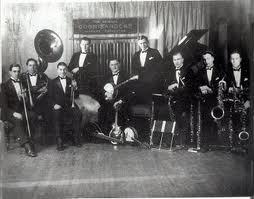 Coon-Sanders Original Nighthawk Orchestra
Coon-Sanders Original Nighthawk Orchestra
Coon-Sanders Original Nighthawk Orchestra was the first Kansas City jazz band to achieve national recognition, which it acquired through national radio broadcasts. It was founded in 1919, as the Coon-Sanders Novelty Orchestra, by drummer Carleton Coon and pianist Joe Sanders.
The orchestra began broadcasting in 1922 on clear channel station WDAF, which could be received throughout the United States. They were broadcast in performance at the Muehlebach Hotel in Kansas City. They took the name Nighthawks because they broadcast late at night (11:30pm to 1:00am). By 1924 their fan club had 37,000 members. Fans were encouraged to send in requests for songs by letter, telephone or telegram. That move became so popular that Western Union set up a ticker tape between Sanders' piano and Coon's drums so the telegrams could be acknowledged during the broadcasts. Their song "Nighthawk Blues" includes the lines: "Tune right in on the radio/Grab a telegram and say 'Hello'." In 1925, they recorded the Paul Whiteman and Fred Rose composition "Flamin' Mamie".
At their peak, each member of the Orchestra owned identical Cord Automobiles, each in a different color with the name of the Orchestra and the owner embossed on the rear. The Orchestra's popularity showed no signs of abating and their contract with MCA had another 15 years to run in the spring of 1932 when Carleton Coon came down with a jaw infection and died, on May 4.
Joe Sanders attempted to keep the organization going; however, without Coon, the public did not support them. In 1935, he formed his own group and played until the early 1940s when he became a part time orchestra leader and studio musician. In his later years he suffered from failing eyesight and other health problems. He died in 1965 after suffering a stroke.
The Kansas City Public Library acquired the scrapbooks and other memorabilia collected and prepared by Joe Sanders and the information is available to researchers.

 Coon-Sanders Original Nighthawk Orchestra
Coon-Sanders Original Nighthawk OrchestraCoon-Sanders Original Nighthawk Orchestra was the first Kansas City jazz band to achieve national recognition, which it acquired through national radio broadcasts. It was founded in 1919, as the Coon-Sanders Novelty Orchestra, by drummer Carleton Coon and pianist Joe Sanders.
The orchestra began broadcasting in 1922 on clear channel station WDAF, which could be received throughout the United States. They were broadcast in performance at the Muehlebach Hotel in Kansas City. They took the name Nighthawks because they broadcast late at night (11:30pm to 1:00am). By 1924 their fan club had 37,000 members. Fans were encouraged to send in requests for songs by letter, telephone or telegram. That move became so popular that Western Union set up a ticker tape between Sanders' piano and Coon's drums so the telegrams could be acknowledged during the broadcasts. Their song "Nighthawk Blues" includes the lines: "Tune right in on the radio/Grab a telegram and say 'Hello'." In 1925, they recorded the Paul Whiteman and Fred Rose composition "Flamin' Mamie".
At their peak, each member of the Orchestra owned identical Cord Automobiles, each in a different color with the name of the Orchestra and the owner embossed on the rear. The Orchestra's popularity showed no signs of abating and their contract with MCA had another 15 years to run in the spring of 1932 when Carleton Coon came down with a jaw infection and died, on May 4.
Joe Sanders attempted to keep the organization going; however, without Coon, the public did not support them. In 1935, he formed his own group and played until the early 1940s when he became a part time orchestra leader and studio musician. In his later years he suffered from failing eyesight and other health problems. He died in 1965 after suffering a stroke.
The Kansas City Public Library acquired the scrapbooks and other memorabilia collected and prepared by Joe Sanders and the information is available to researchers.
Published on October 15, 2012 04:45
October 14, 2012
Sunday, October 14, 1934
Went to Sunday school and church. Changed classess. Helen and I saw "Flying Down to Rio."
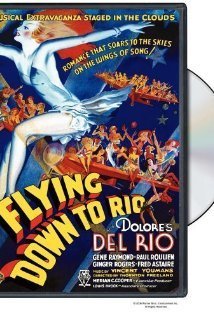
Starring Dolores del Rio, Gene Raymond and Raul Roulien
Genre: Comedy/Musical/Romance
Run Time: 89 minutes
Plot Summary:
Aviator and band leader Roger Bond is forever getting his group fired for flirting with the lady guests. When he falls for Brazilian beauty Belinha de Rezende it appears to be for real, even though she is already engaged. His Yankee Clippers band is hired to open the new Hotel Atlântico in Rio and Roger offers to fly Belinha part way home. After a mechanical breakdown and forced landing, Roger is confident and makes his move, but Belinha plays hard to get. She can't seem to decide between Roger and her fiance Júlio. When performing the airborne production number to mark the Hotel's opening, Júlio gets some intriguing ideas...

Starring Dolores del Rio, Gene Raymond and Raul Roulien
Genre: Comedy/Musical/Romance
Run Time: 89 minutes
Plot Summary:
Aviator and band leader Roger Bond is forever getting his group fired for flirting with the lady guests. When he falls for Brazilian beauty Belinha de Rezende it appears to be for real, even though she is already engaged. His Yankee Clippers band is hired to open the new Hotel Atlântico in Rio and Roger offers to fly Belinha part way home. After a mechanical breakdown and forced landing, Roger is confident and makes his move, but Belinha plays hard to get. She can't seem to decide between Roger and her fiance Júlio. When performing the airborne production number to mark the Hotel's opening, Júlio gets some intriguing ideas...
Published on October 14, 2012 04:45
October 13, 2012
Saturday, October 13, 1934
Aunt Jennie was up. Got overshoes today. Helen's were over. Went up to Pauline's. Nadine's sister had a baby boy. Ollie was over.



Published on October 13, 2012 04:45
October 12, 2012
Friday, October 12, 1934
Daddy took us to school. Stayed for typing. Pauline and Ruth Ray were down. I got some grapes.
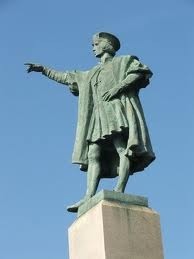 Christopher Columbus (Italian: Cristoforo Colombo; Spanish: Cristóbal Colón; before 31 October 1451 – 20 May 1506)
Christopher Columbus (Italian: Cristoforo Colombo; Spanish: Cristóbal Colón; before 31 October 1451 – 20 May 1506)
Columbus Day is a U.S. holiday that commemorates the landing of Christopher Columbus in the New World on October 12, 1492. It was unofficially celebrated in a number of cities and states as early as the 18th century but did not become a federal holiday until 1937. For many, the holiday is a way of both honoring Columbus' achievements and celebrating Italian-American heritage. Throughout its history, Columbus Day and the man who inspired it have generated controversy, and many alternatives to the holiday have appeared in recent years.

 Christopher Columbus (Italian: Cristoforo Colombo; Spanish: Cristóbal Colón; before 31 October 1451 – 20 May 1506)
Christopher Columbus (Italian: Cristoforo Colombo; Spanish: Cristóbal Colón; before 31 October 1451 – 20 May 1506)Columbus Day is a U.S. holiday that commemorates the landing of Christopher Columbus in the New World on October 12, 1492. It was unofficially celebrated in a number of cities and states as early as the 18th century but did not become a federal holiday until 1937. For many, the holiday is a way of both honoring Columbus' achievements and celebrating Italian-American heritage. Throughout its history, Columbus Day and the man who inspired it have generated controversy, and many alternatives to the holiday have appeared in recent years.
Published on October 12, 2012 04:45
October 11, 2012
Thursday, October 11, 1934
Went to school. Daddy worked today.
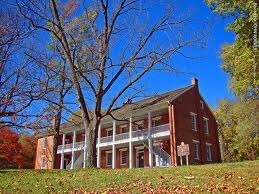 Shawnee Indian Mission Historical Site
Shawnee Indian Mission Historical Site
3403 West 53rd Street
Fairway Kansas 66205
(913) 262-0867
The Shawnee Indian Mission in Fairway, Kansas served as a manual training school for children from the Shawnee, Delaware and other Indian nations from 1839-1854 and continued as a school without manual training until 1862. The territorial governor, Andrew Reeder, established his offices at the mission in 1854. The first territorial legislature met at the mission in 1855 after adjourning from the first territorial capital at present day Fort Riley. During the legislative session the "bogus laws" were passed in an attempt to further slavery in Kansas. The mission was also a supply point on the Santa Fe and Oregon Trails and an Union camp during the Civil War. Thomas Johnson, the Methodist missionary who founded Shawnee Indian Mission, is buried in the nearby Shawnee Methodist Mission Cemetery. He was killed in 1865 for his antislavery sentiments.

 Shawnee Indian Mission Historical Site
Shawnee Indian Mission Historical Site3403 West 53rd Street
Fairway Kansas 66205
(913) 262-0867
The Shawnee Indian Mission in Fairway, Kansas served as a manual training school for children from the Shawnee, Delaware and other Indian nations from 1839-1854 and continued as a school without manual training until 1862. The territorial governor, Andrew Reeder, established his offices at the mission in 1854. The first territorial legislature met at the mission in 1855 after adjourning from the first territorial capital at present day Fort Riley. During the legislative session the "bogus laws" were passed in an attempt to further slavery in Kansas. The mission was also a supply point on the Santa Fe and Oregon Trails and an Union camp during the Civil War. Thomas Johnson, the Methodist missionary who founded Shawnee Indian Mission, is buried in the nearby Shawnee Methodist Mission Cemetery. He was killed in 1865 for his antislavery sentiments.
Published on October 11, 2012 04:45
October 10, 2012
Wednesday, October 10, 1934
Ruth Ray and I walked to school. Tests in Shorthand and English. Went to the nurse. Rode home. Pauline and Nadine came down in the evening.
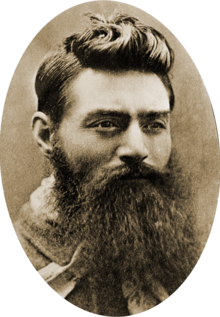 Edward "Ned" Kelly (June 1854 or 1855 – 11 November 1880)
Edward "Ned" Kelly (June 1854 or 1855 – 11 November 1880)
When the Kellys Rode is a 1934 Australian film directed by Harry Southwell about Ned Kelly and his gang. A policeman comes to arrest Dan Kelly, which results in him being shot and Ned Kelly going on the run with his gang. They rob several banks but are captured and killed at the Glenrowan Hotel. The movie was released in Australia in October 1934.

 Edward "Ned" Kelly (June 1854 or 1855 – 11 November 1880)
Edward "Ned" Kelly (June 1854 or 1855 – 11 November 1880)When the Kellys Rode is a 1934 Australian film directed by Harry Southwell about Ned Kelly and his gang. A policeman comes to arrest Dan Kelly, which results in him being shot and Ned Kelly going on the run with his gang. They rob several banks but are captured and killed at the Glenrowan Hotel. The movie was released in Australia in October 1934.
Published on October 10, 2012 04:45
October 9, 2012
Tuesday, October 9, 1934
Rode to school. Went up and played at Pauline's. Got apples. It sure was warm today.
 Stayman's Winesap Apple
Stayman's Winesap Apple
A Stayman (or Stayman's Winesap) is a triploid apple cultivar developed in 1866 by Joseph Stayman of Leavenworth, KS; sold by nurseries from 1895. There are two other varieties of Stayman apples; one is green, the other yellow. Staymans remain a locally popular cultivar of apple where grown.

 Stayman's Winesap Apple
Stayman's Winesap AppleA Stayman (or Stayman's Winesap) is a triploid apple cultivar developed in 1866 by Joseph Stayman of Leavenworth, KS; sold by nurseries from 1895. There are two other varieties of Stayman apples; one is green, the other yellow. Staymans remain a locally popular cultivar of apple where grown.
Published on October 09, 2012 04:45



